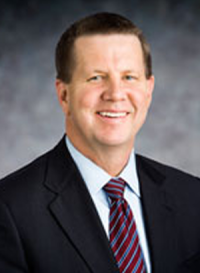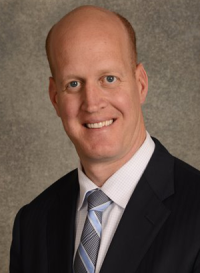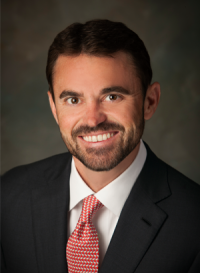The transition to population health management is having significant strategy implications for hospitals’ and health systems’ real estate holdings. Now, more than ever, health care organizations need a systematic approach to managing their inpatient and ambulatory real estate portfolios. The emphasis should be on providing high-quality care in the lowest-cost setting. Health Forum convened a panel of hospital executives to discuss the impact of population health on real estate planning.
Barry Ostrowsky
President & CEO of Barnabas Health
Our population health approach centers on becoming more integrated with our various communities. We span every demographic in New Jersey — from inner city to suburban. We’re working to understand the health needs of each of those demographics and create programs to address their needs. We’re gaining traction. People are starting to recognize that we’re no longer just a hospital, but rather a diversified, accessible organization. And we think that enhances the patient experience.
Cliff Robertson, M.D.
Senior Vice President of Operations and CEO of CHI Health
We are downsizing our acute care capacity in Omaha, moving all of our acute care services into Bergan Mercy Medical Center. The process will take a couple of years. We essentially had two hospitals that were underutilized from a physical plant capacity. In addition to that project, we’re spinning off two large ambulatory projects. One is a faculty practice clinic attached to Bergan Mercy Medical Center. We’re also building a 40,000-sq. ft. ambulatory center in north Omaha, which has an underserved population. It will have a freestanding emergency department, as well as a large ambulatory destination center. For the past several years, we’ve focused on developing family health centers throughout metropolitan Omaha. We want to have an ambulatory site that’s within a five-minute drive of the entire population, because we know the future will be about ambulatory care and about access points.
It’s very much a retail strategy. We identified specific parts of town where we wanted a presence and drew concentric circles to map out a five-minute drive around these points. That was planned a few years ago, and we’re two-thirds of the way through that development plan. Our strategy team drives the development of our facilities plan. We have a master facilities plan for our hospital campus and we’ve used that model to develop an MFP for population health.
Gil Peri
Senior Vice President and Chief Strategy Officer of Children’s Hospital Colorado
In the past seven years, we have developed a robust network of care strategy, expanding across our region. We realize not everyone will want, or be able, to come to our main campus for all of our services. We’ve expanded our focus beyond our four walls, using virtual health and remote care. We have 49 clinics throughout the state to ensure that patients have access to primary care and specialty services.
Allen Daugird, M.D.
President, UNC Physicians and Chief Value Officer, UNC Health Care
Consolidation is happening in our market. If we are going to survive and thrive, we need to expand our reach. We will fail unless we can provide medical homes for patients. Some of our more complex patients need active care. Our focus is on developing smaller facilities embedded in communities that will have enough volume to support ancillary services, including internal medicine, pediatrics and family medicine. This will enhance access for our patients.
Barry Ostrowsky
President & CEO of Barnabas Health
Our business development division is responsible for assessing our expansion and growth strategy. We are also migrating to a retail mentality. In our case, our retail strategy differs, depending on whether it’s an urban or suburban area. One size does not fit all, particularly in markets where public transportation is key. When we build a new access point, we want it to be built, designed and managed in a way that is meaningful to the population it will serve.
New Jersey continues to be a fee-for-service, open access state. Until we have risk, we’re trying to attract folks to new venues and integrating what we think will be helpful to their daily lives, without necessarily having any financial management of population requirement under any particular program.
Cliff Robertson, M.D.
Senior Vice President of Operations and CEO of CHI Health
In the old world of fee for service, hospitals and health systems were less inclined to seek out underdeveloped communities to build new facilities. In a market like ours, where we have a clinically integrated network that’s been managing a full-risk agreement around the Medicaid population for years, we look at underserved communities as a significant growth opportunity. As the payment system continues to change, it’s going to impact how we think about where we make our fixed facility investments.
John Holland
CEO of LHP Hospital Group
Our investments over the next couple of years will be focused less on population health, and more toward delivering the right care in the right setting. In some cases, we’ll seek partnerships. We are paying close attention to access. For our Medicaid population, for example, we want to make it convenient for them. If we are going to take on the risk of their health, we want them to have easy access to the right services, and not just rely on our ED.
Richard M. Rendina
Chariman and CEO of Rendina
Every organization has a different approach. It can be systematic in terms of philosophy as to whether they prefer to lease or own outpatient facilities. If an organization favors leasing, it likely won’t conduct an audit as often as an organization that favors ownership. Many of the hospitals we work with evaluate the benefits of leasing vs. owning as it relates to the specific project, the intended uses and outpatient services in the building, and their strategy for population health.
Gil Peri
Senior Vice President and Chief Strategy Officer of Children’s Hospital Colorado
Population health is changing how we collaborate with our community partners to develop facilities. By working with other organizations in our community, we can go where the population needs us. We’re exploring mixed-use facilities. For example, we may co-develop a facility in which we occupy 75 percent of the building’s space, with the other 25 percent occupied by a community partner.
Barry Ostrowsky
President & CEO of Barnabas Health
We have purchased a number of physician practices over the past couple of years and with them, we usually inherit a series of offices. We then have to determine if the market is better served by consolidating some of these practices. It’s a market-by-market analysis. In some areas, we are building new offices, and our expectation is that we expect the practices that we own, and practices that we don’t own, to relocate. In other areas, we are evaluating what the cost would be to effectively walk away from some lease premises if we want to consolidate physicians. Right now, we have about 1,200 employed physicians and we’re trying to optimize our real estate strategy around them. It’s going to take a long time to migrate those practices to better locations as we identify them.
Cliff Robertson, M.D.
Senior Vice President of Operations and CEO of CHI Health
Across Catholic Health Initiatives, we’ve accumulated an unbelievable amount of square footage that’s come along with physician practices that have teamed up with our various facilities. We have more than 100 acute care facilities, and we’re in 19 states. As a result, CHI has its own real estate department. Like every organization, we’re trying to figure out how to rationalize our asset footprint — whether it’s acute care assets or clinic or ambulatory assets. We’re trying to find the most cost-effective, efficient way to deliver care. Are primary care practices with five or six physicians big enough to support their own facility, or are we better off bringing about 20 providers together under one roof to maximize the efficiency of the operational support?
John Holland
CEO of LHP Hospital Group
With respect to our primary care strategy, we don’t believe that small one or two-physician practices will be an efficient way to practice. To effectively manage the risk of a population, we feel we need to move to a model where we have five or six practitioners — not just physicians — to manage our populations. Most of our physician offices are leased, by the way. We don’t own much of that real estate.
Gil Peri
Senior Vice President and Chief Strategy Officer of Children’s Hospital Colorado
We’re working to identify the lowest-cost, highest-quality opportunity to provide care. We are partnering with the school system, for example, to improve child health. If we can take care of patients effectively in the community, it will free up capacity for children who need to be in the hospital.
On the inpatient side, we continue to take a close look at our capacity. We’ve right-sized, moving as many services to the ambulatory setting as possible. If our patients do not have access to our services, we are at risk. So, again, our focus is on providing high-quality care in the lowest-cost setting.
Allen Daugird, M.D.
President, UNC Physicians and Chief Value Officer, UNC Health Care
North Carolina is a certificate-of-need state, and CON often lags behind population growth. The cost of health care is unsustainable; it’s not good for the economy of North Carolina and it’s not good for our employers. We’re focusing on building a population health infrastructure, so we can effectively take on risk. And if we are going to take on risk, we need to take care of our patients across the continuum of care. It takes a long time to make decisions. We’re developing more streamlined governance to help us change our culture, so we can become more nimble and execute our strategy more quickly.
Barry Ostrowsky
President & CEO of Barnabas Health
We have a blend of owned and leased space, depending on the nature of use. Our physician practices typically are leased. Our big ambulatory sites are owned. We’re not in the real estate business and I don’t want to be in the real estate business. I’m happy to have real estate partners that own and manage the real estate and make it possible for us to deliver on our mission. If the cost of the real estate as a lease-back tenant makes sense, that’s great. We’re not driven by monetizing real estate with cash on the balance sheet. We’d rather start by knowing the location that we need, what has to be built there, or what has to be modified. We also look at what’s the best way to finance the business that will be housed within the facility.
Allen Daugird, M.D.
President, UNC Physicians and Chief Value Officer, UNC Health Care
As we assess our real estate holdings, one of the things we consider is whether it makes sense to monetize our assets. Should we sell and monetize, or are we better off going to the debt market? We finance some of our projects through our reserves and we also lend-lease. Monetizing our real estate is something we continue to consider.






























